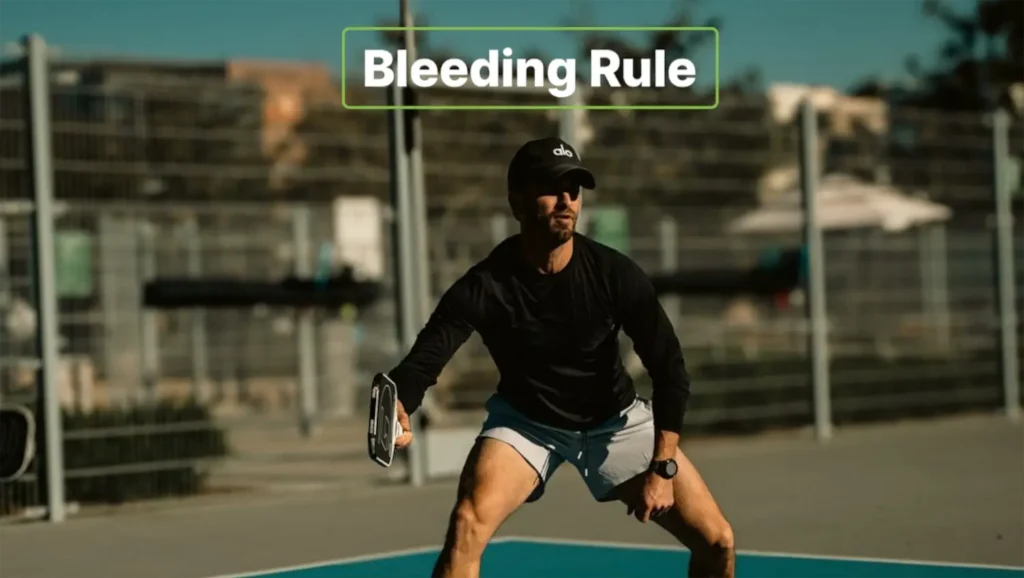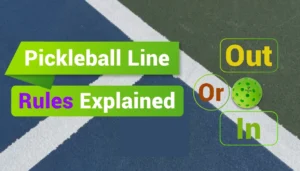I once went for a killer Erne and ended up doing more of a somersault than a smash. Landed on my pride—and my elbow. That was the day I learned the hard way that pickleball isn’t just fun and games—it’s also a sport where injuries can sneak up on you faster than a kitchen violation.
Thankfully, there are some clear pickleball injury rules that help players stay safe and keep the game fair.
In this guide, I’ll walk you through those rules, sprinkle in a few of my own bruised-but-wise lessons, and share how you can avoid turning your next rally into a rescue mission.
Why Injury Rules Matter in Pickleball
Let’s face it: Pickleball’s addictive! We get caught up in the fun, moving fast, and sometimes we push a bit too hard. Injuries can happen, even if they’re just minor ones like muscle tweaks or blisters.
Injury rules help players by giving them the time and support they need to recover or get off the court if necessary. Knowing these rules can prevent bigger issues and let you play without worry.
Medical Timeouts: When You Need a Real Break
If you’ve ever found yourself wincing after a sudden twist or tumble, this rule’s for you. In pickleball, you’re allowed one medical timeout per match for injuries that need immediate attention.
How It Works:
- One-Time Use: Each player gets just one medical timeout per match, so it’s best to save it for serious situations.
- Length: Medical timeouts can last up to 15 minutes. This might sound long, but it can go quickly when you’re trying to assess an injury.
- Approval Needed: For the timeout to be valid, a referee or tournament official has to confirm that the injury is legitimate (no taking a timeout for leg cramps!). If no officials are on hand, players can decide mutually, but sportsmanship here is key.
What Happens After 15 Minutes?
If, after the timeout, the player isn’t ready to continue, they may need to forfeit the match. I know that’s a tough call, especially when you’re in the heat of competition, but your health comes first.
Example: I remember a match where I saw a player twist their ankle. They took a medical timeout, and the ref called in the on-site medical team to check it out.
Sadly, they couldn’t keep playing, but it was a good call for their long-term recovery. Having those 15 minutes allowed them to assess their limits without the pressure of the clock ticking.
Bleeding Rule: Keeping It Clean and Safe

Pickleball has a strict rule when it comes to blood on the court. If there’s bleeding—whether it’s from a scraped knee or a small cut—the game has to stop immediately.
How It Works:
- Stop Play: If you or another player is bleeding, the game pauses until the bleeding is controlled and any blood on clothing, paddles, or the court is cleaned.
- No Time Limit: While there’s no official time limit for this, the goal is to resume play as soon as possible. It’s treated as a referee timeout, so it doesn’t count against your other timeouts.
This rule keeps everyone safe by making sure there’s no risk of contamination. I once got a minor scrape after diving for a shot and had to pause to clean up. It felt like a small issue at the time, but the rule reminded me that safety comes first.
Equipment Timeouts for Injury-Related Issues
Sometimes, injuries aren’t about big falls or obvious injuries but come from your equipment. Blisters, for instance, are common if your grip or shoes aren’t quite right.
How It Works:
- Duration: Equipment timeouts usually last up to 2 minutes, allowing quick adjustments.
- When to Use It: If your injury involves gear—like taping up a blister or adjusting your paddle grip—a quick equipment timeout can help. You don’t have to use your standard timeouts first; this one’s specific to equipment needs.
These quick timeouts can be surprisingly helpful. I once had a match where my grip kept slipping, which was causing blisters. An equipment timeout allowed me to wrap my handle and keep playing comfortably. Little adjustments can make a big difference.
Medical Forfeits and Considerations for Ongoing Health
If the injury’s too severe and a player can’t continue, they may need to “retire” from the match. It’s never ideal, but this option is available to protect players.
How It Works:
- Match Forfeit: If you’re unable to resume after a medical timeout or an injury, the match is given to the opponent.
- Self-Care Priority: Forfeits are allowed to make sure players prioritize their health rather than pushing through and risking further injury.
Story Time: I’ve seen players push themselves, sometimes too far, and it’s a tough watch. Knowing when to stop isn’t easy, especially if you’re competitive. But in the long run, listening to your body can be the best decision for your game and health.
Tips for Injury Prevention and Care on the Court
While knowing the rules is crucial, preventing injuries in the first place is even better. Here are some personal tips that I’ve found helpful:
- Warm Up Properly: Take five to ten minutes before every match to stretch and get your muscles moving. This small step reduces the chance of sudden strains or pulls.
- Check Your Gear: Make sure your shoes have good grip, your paddle handle isn’t worn down, and you have any supports (like ankle or knee braces) that you need.
- Stay Hydrated: Dehydration can lead to cramping, so keep water on hand. Hydration breaks are sometimes allowed in tournaments—take them if they’re available.
- Know Your Limits: As tempting as it is to go for every ball, recognize when to hold back, especially if you’re already feeling tired or sore. Better to miss a shot than to sit out a month with an injury!
Play Smart, Play Safe
In pickleball, as much as we all love the thrill of the game, safety is key. Understanding the injury rules lets you play with confidence, knowing there are guidelines to help when things don’t go as planned.
Whether it’s taking a medical timeout, dealing with an equipment issue, or even choosing to forfeit, remember that these rules are in place to protect players like you and me.
So next time you hit the court, keep these rules in mind, take care of yourself, and enjoy the game. After all, the best way to stay in the game is to stay injury-free!
Got any injury stories or tips of your own? Let’s chat in the comments or connect on social media—I’d love to hear your experiences and how you handle those tricky moments on the court!



